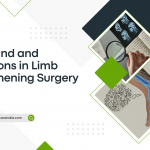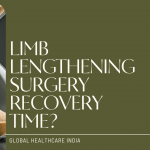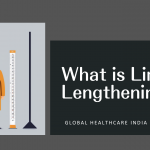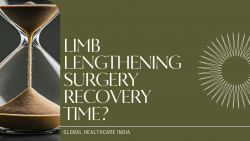Age Limits for Limb Lengthening Surgery
Limb lengthening surgery has emerged as a viable option for individuals with leg length discrepancies or those seeking cosmetic height enhancement. This procedure involves surgically creating a controlled fracture in the bone, allowing for gradual lengthening and new bone growth. While the concept might sound complex, the real question for many considering this surgery is:
Is there an age limit for limb lengthening?
The answer, like most things in medicine, is not a simple yes or no. Age does play a role, but it’s more nuanced than a specific cutoff point. Let’s delve deeper into the factors that determine candidacy for limb lengthening surgery based on age.
Age Groups and Considerations
Pediatric Patients: For children and adolescents with congenital conditions like limb deficiencies or growth plate injuries that have resulted in leg length discrepancies, limb lengthening surgery can be a transformative procedure. Here, the focus is on correcting a medical issue and restoring functionality. Age becomes less relevant as long as the growth plates haven’t closed yet. Early intervention can promote proper development and prevent future complications.
Adolescents and Young Adults: This age group often presents with leg length discrepancies due to uneven growth or childhood injuries. Limb lengthening can address these concerns, improving gait, posture, and overall confidence. The key consideration here is whether the growth plates have fused. Procedures like epiphyseal arrest (stopping growth in the longer leg) might be employed in conjunction with lengthening to achieve optimal results. Generally, adolescence onwards is considered a suitable timeframe for limb lengthening, provided the growth plates haven’t closed.
Adult Patients: While less common, limb lengthening surgery can also be beneficial for adults. Here, the reasons can be varied:
- Corrective Surgery: Trauma or accidents can lead to leg shortening in adults. Limb lengthening helps restore lost length and improve gait mechanics.
- Post-traumatic Deformities: Injuries can cause bone malalignment or shortening. Lengthening surgery, along with corrective procedures, can address these issues.
- Cosmetic Height Enhancement: Some adults might seek limb lengthening for purely aesthetic reasons, desiring to increase their height.
For adults considering cosmetic lengthening, age becomes a more significant factor. While there’s no strict upper limit, factors like bone healing potential and the demands of the recovery process need careful consideration. Generally, surgeons recommend patients be below 50 for optimal outcomes.
Age-Related Considerations
Here’s a breakdown of some key factors that influence candidacy based on age:
- Bone Healing: Younger individuals, with their active bone metabolism, tend to heal faster and experience better bone regeneration during the lengthening process. As we age, bone healing slows down, and complications like non-unions (incomplete bone healing) become a higher risk.
- Soft Tissue Flexibility: Younger patients generally have more flexible muscles, tendons, and ligaments. This flexibility allows for better adaptation to the lengthening process and reduces the risk of soft tissue contractures. With age, tissues become less flexible, potentially leading to stiffness and gait issues.
- Recovery Tolerance: The extensive physical therapy and rehabilitation required post-surgery can be physically demanding. Younger patients typically have better tolerance and can participate more actively in physiotherapy, leading to faster recovery.
Medical Conditions vs. Cosmetic Procedures
The motivations behind limb lengthening surgery also influence age considerations. For medical reasons, correcting a deformity or restoring lost function takes precedence over age. Here, the focus is on improving quality of life, and surgeons might be more flexible with the age limit.
However, for purely cosmetic procedures, a more cautious approach is warranted. The risks and demands of the surgery need to be weighed against the desired aesthetic outcome. Younger patients are generally better suited for these procedures due to the factors mentioned above.
Consultation with Orthopedic Specialists
Ultimately, the decision regarding candidacy for limb lengthening surgery rests with a qualified orthopedic surgeon specializing in limb lengthening procedures. They will conduct a thorough evaluation, including:
- Medical history and physical examination: This helps assess overall health and identify any underlying conditions that might affect healing.
- Imaging studies: X-rays, CT scans, and MRIs provide detailed information about bone structure, soft tissues, and any potential challenges.
- Psychological evaluation: For cosmetic procedures, a psychological assessment might be recommended to ensure realistic expectations and a strong support system during the demanding recovery process.
The surgeon will discuss the various surgical techniques available, the expected lengthening amount, the recovery timeline, and the potential risks and complications associated with the procedure. Based on your age, health status, and motivations, they will determine if limb lengthening is the right option for you.
Conclusion
Limb lengthening surgery can be a life-changing procedure, improving function and confidence. While age plays a role, it’s not a definitive barrier. A consultation with a qualified orthopedic surgeon specializing in limb lengthening is crucial. They can assess your individual situation, considering your age, health, and goals to

















